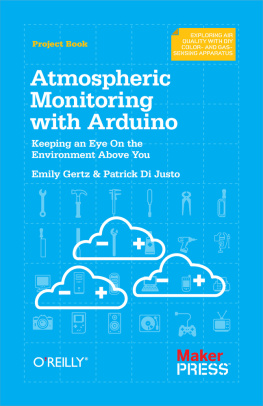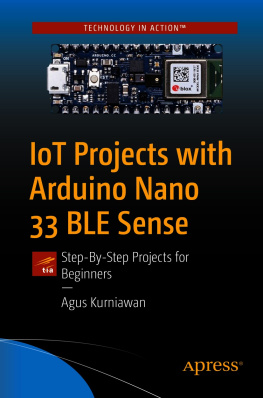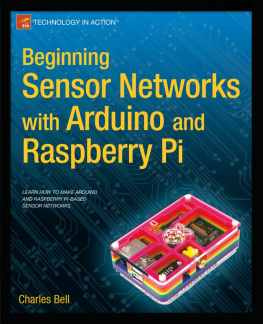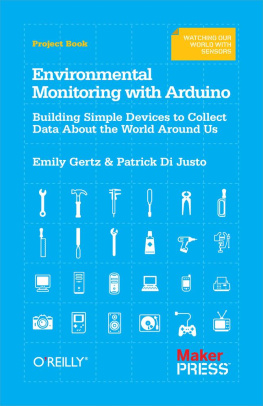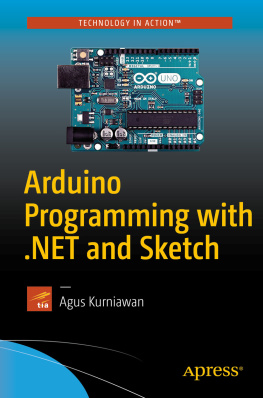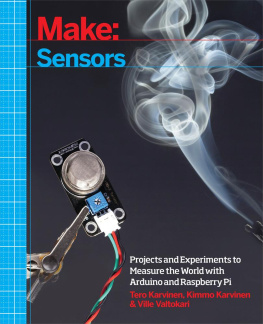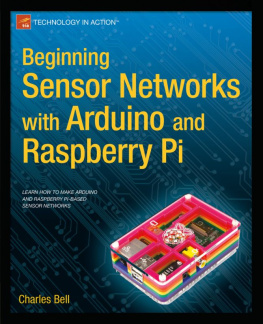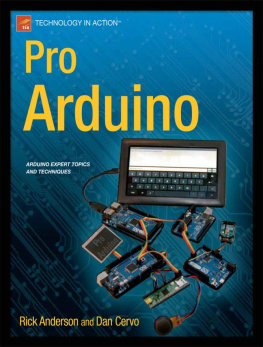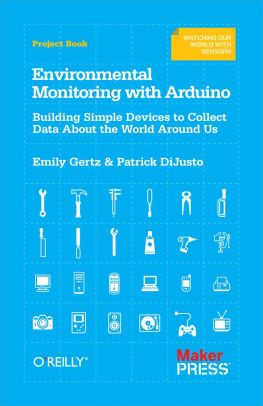Patrick Di Justo - Atmospheric Monitoring With Arduino: Building Simple Devices to Collect Data About the Environment
Here you can read online Patrick Di Justo - Atmospheric Monitoring With Arduino: Building Simple Devices to Collect Data About the Environment full text of the book (entire story) in english for free. Download pdf and epub, get meaning, cover and reviews about this ebook. year: 2012, publisher: Make, genre: Romance novel. Description of the work, (preface) as well as reviews are available. Best literature library LitArk.com created for fans of good reading and offers a wide selection of genres:
Romance novel
Science fiction
Adventure
Detective
Science
History
Home and family
Prose
Art
Politics
Computer
Non-fiction
Religion
Business
Children
Humor
Choose a favorite category and find really read worthwhile books. Enjoy immersion in the world of imagination, feel the emotions of the characters or learn something new for yourself, make an fascinating discovery.
- Book:Atmospheric Monitoring With Arduino: Building Simple Devices to Collect Data About the Environment
- Author:
- Publisher:Make
- Genre:
- Year:2012
- Rating:5 / 5
- Favourites:Add to favourites
- Your mark:
Atmospheric Monitoring With Arduino: Building Simple Devices to Collect Data About the Environment: summary, description and annotation
We offer to read an annotation, description, summary or preface (depends on what the author of the book "Atmospheric Monitoring With Arduino: Building Simple Devices to Collect Data About the Environment" wrote himself). If you haven't found the necessary information about the book — write in the comments, we will try to find it.
Detect harmful gases, dust particles such as smoke and smog, and upper atmospheric hazesubstances and conditions that are often invisible to your senses. Youll also discover how to use the scientific method to help you learn even more from your atmospheric tests.
Get up to speed on Arduino with a quick electronics primer
Build a tropospheric gas sensor to detect carbon monoxide, LPG, butane, methane, benzene, and many other gases
Create an LED Photometer to measure how much of the suns blue, green, and red light waves are penetrating the atmosphere
Build an LED sensitivity detectorand discover which light wavelengths each LED in your Photometer is receptive to
Learn how measuring light wavelengths lets you determine the amount of water vapor, ozone, and other substances in the atmosphere
Upload your data to Cosm and share it with others via the Internet
The future will rely on citizen scientists collecting and analyzing their own data. The easy and fun gadgets in this book show everyone from Arduino beginners to experienced Makers how best to do that.
--Chris Anderson, Editor in Chief of Wired magazine, author of Makers: The New Industrial Revolution (Crown Business)
Patrick Di Justo: author's other books
Who wrote Atmospheric Monitoring With Arduino: Building Simple Devices to Collect Data About the Environment? Find out the surname, the name of the author of the book and a list of all author's works by series.

